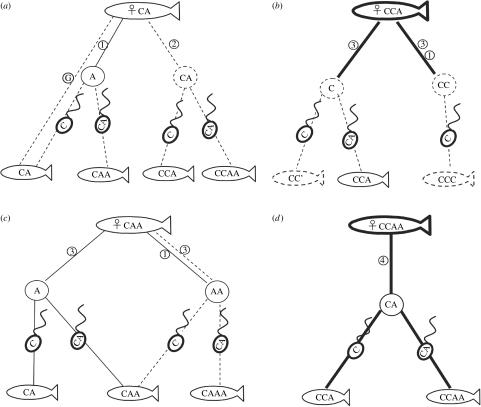Figure 1.
Summary of the most probable modes of reproduction of S. alburnoides hybrid females found in northern regions of the Iberian Peninsula. (a) CA (diploid), (b) CCA (triploid), (c) CAA (triploid) and (d) CCAA (tetraploid). Fish forms and pathways (solid lines) previously described (Carmona et al. 1997; Pala & Coelho 2005) and hypothetical forms and pathways (dashed lines). Bold lines indicate crossing experiments. C is the genome of the parental host (S. carolitertii) and A is the genome of the ‘unknown’ ancestor. Dashed fish symbol with CC' indicates reconstituted S. carolitertii. Spermatozoid symbol with C indicates fertilization by C sperm; Spermatozoid symbol with CA indicates fertilization by CA sperm (produced by tetraploid males in our breeding experiments). G, gynogenesis; 1, hybridogenesis (observed exclusively in the Douro River); 2, unreduced eggs with high levels of syngamy; 3, meiotic hybridogenesis; and 4, normal meiosis.

